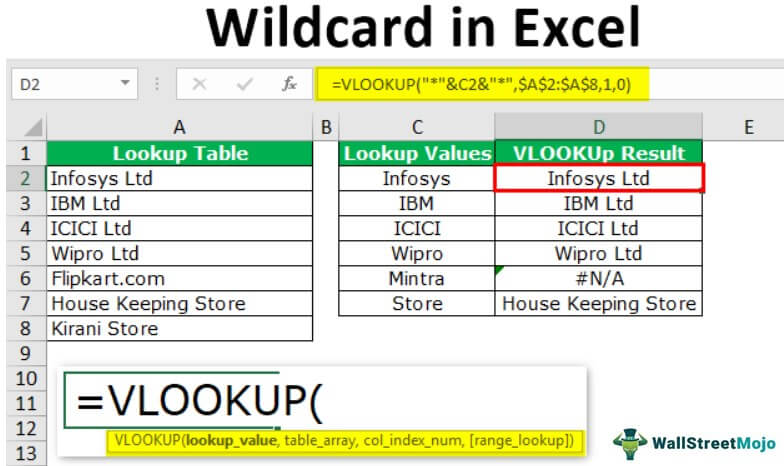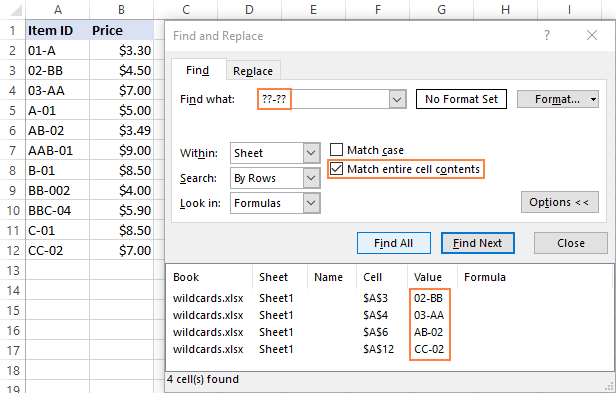

- #Ms word search wildcard how to#
- #Ms word search wildcard code#
Letters and numbers entered in the Find what text box are still treated as literals. You use the Find and Replace dialog (Ctrl-H).Making these changes requires the following set up:
#Ms word search wildcard code#
The bottom line is that the code can be clean as you need it and won’t take long by using wildcard replacement.
Select the entire document and paste back into NotePad. Find what \* and Replace with: (a single space character). Finally, some editors (such as NotePad) truncate each line with a paragraph mark, which we don’t always want. Single tags (those with no matching bookend needed), can also be replaced the same way, although only one step is needed for each tag. It’ll probably take three sets of Replaces All. If your document contains asterisks, choose any another character, one that is not used. Get rid of line breaks for the moment since they interfere with these find operations. In all operations replacing text with nothing, make sure the Replace with edit box is empty, removing spaces. In Find what, enter \*\ and Replace with nothing. Use a wildcard search in the Open and Replace dialog (Crtl-H), clicking More and check Use wildcards. Delete everything between the Style tags. 
This may seem redundant but now the HTML is editable and will later be pasted back. Copy all that text and paste into a new Word document.Right-click and select Open with NotePad. Open that document in Explorer with NotePad.
 Save it within Word as an HTML file, preferably as Web Page, Filtered, confirming the format change with Yes. A quick way to add text is type =rand(5,3) and Enter. Create a new Word document, adding some text to it. Ironically, you can use Word to clean up its own HTML. So bad in fact, some companies discourage Word-generated HTML files. Word can save a document as HTML but produces some of the worst HTML code. Writers are increasingly expected to fix code. The real power is using this with code, such as HTML or XML. Wildcard replace allows the found pattern, or part of the pattern, to be used in the replacement. Yes, you can find all of those within a set in a single search. This could be color/colour, or any form of Jeffery/Jeffeory/Geffrey. However, there are cases when you do not know exactly what you’re looking for. We’re all used to the conventional search that specifies exact text, perhaps the word properties in a document. Wildcard search allows you to find patterns rather than exact text. There are suggestions at the end of the article. If these look promising, you are encouraged to investigate further. Instead, it is a demonstration for what wildcards can do. A short article like this one couldn’t do justice to this topic. This article is not a tutorial about wildcards.
Save it within Word as an HTML file, preferably as Web Page, Filtered, confirming the format change with Yes. A quick way to add text is type =rand(5,3) and Enter. Create a new Word document, adding some text to it. Ironically, you can use Word to clean up its own HTML. So bad in fact, some companies discourage Word-generated HTML files. Word can save a document as HTML but produces some of the worst HTML code. Writers are increasingly expected to fix code. The real power is using this with code, such as HTML or XML. Wildcard replace allows the found pattern, or part of the pattern, to be used in the replacement. Yes, you can find all of those within a set in a single search. This could be color/colour, or any form of Jeffery/Jeffeory/Geffrey. However, there are cases when you do not know exactly what you’re looking for. We’re all used to the conventional search that specifies exact text, perhaps the word properties in a document. Wildcard search allows you to find patterns rather than exact text. There are suggestions at the end of the article. If these look promising, you are encouraged to investigate further. Instead, it is a demonstration for what wildcards can do. A short article like this one couldn’t do justice to this topic. This article is not a tutorial about wildcards. 
In this case, these are Microsoft Word’s wildcard search and wildcard replace features. We are in a market that technical writers and programmer-writers cannot afford to overlook the few tools we have.
#Ms word search wildcard how to#
After all, we know how to use them, right? However, over the years they have become powerful text editing tools. Search, along with find and replace, are ubiquitous tools that no one thinks to talk about often. Microsoft Word’s Wildcard Replacements Microsoft Word’s Wildcard ReplacementsĬan Word Solve Its Own HTML Problem? You Betcha!Ī Lead API Documentation Writer








 0 kommentar(er)
0 kommentar(er)
